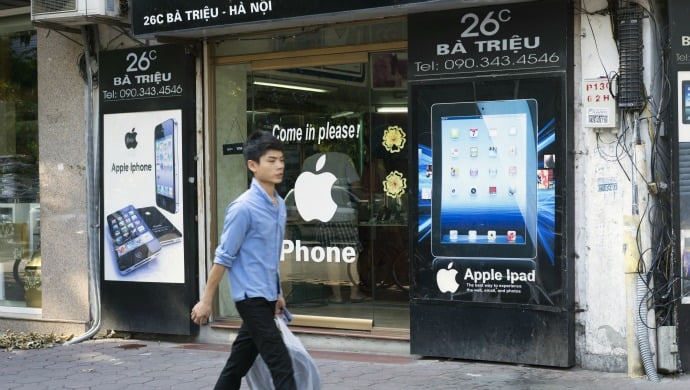If banks and telcos reduce service fees, provide a better API and simplifies the procedure, the hassle of payment can be eliminated, and the e-commerce industry will grow up

Since 2012, foreign investors have been on a gold rush in Myanmar. GDP has climbed up steadily from US$58.68 billion in 2013 to US$64.33 billion in 2014 to US$64.87 billion in 2015.
In July 2016, new democratic government issued a 12-point economic policy and in September, the US pledged to lift all sanctions on Myanmar. Nevertheless, e-commerce transactions in the country still remain relatively low.
Here are four factors to boost the industry:
-
Broadband and ICT infrastructure
Three giant telecom companies (KDDI, Telenor, Ooredoo) had a nationwide coverage and the fourth company is coming soon. The whole ecosystem has new fashion. Internet users will get benefit when discount race outbreaks. However, Internet fee is still huge compared to other countries in Southeast Asia.
Data Centre fee has gone up to US$330 per 1U rack server to US$400 per 2U rack server. However, Internet blackout still remains a headache. Most Myanmarese startups host virtual servers in Singapore or the US.
Additionally, domain name (.com.mm) costs US$70 per year, and 3G data is 5 kyats per MB.
Fiber optic line charges installation fee of US$420, and a monthly fee of US$60/Mbps and annual fee of US$50. Internet service providers (ISPs) here are more reasonable and flexible than others.

If wireline and wireless broadband are made more affordable, it will assist the industry.
-
Payment gateways
Telcos provide two options (USSD or SMS) for consumers when buying online (songs/e-books/wall paper/video). Nevertheless, they now are still blood-suckers and grab 80-85 per cent of the fee. CPs (content providers) get a tiny part. For instance, a song valued 500 kyats, CPs receive only 75-100 kyats.
Yoma bank has partnered with Telenor to provide Wave Money, whereby e-commerce companies act as a Wave shop to receive payment.
Several private banks support VISA, Master card, American Express and JCB. But some are still in the blacklist of US treasury and consequently they could not link with VISA, Master Card and Paypal.
MPU (Myanmar Payment Union) Cards are accepted in most local banks. MPU has approximately one million users. Under five per cent of population own domestic card. Service fee is two-three per cent of the transaction. Until now, under 30 e-commerce startups have agreed to link their API (application programming interface) because the process is quite complicated.
Red Dot network offers an option. It currently co-works with over 13,000 shops nation-wide. Service fee is 20-30 per cent which is suitable with digital CPs (game, e-books). Red Dot Zay (C2C model) was launched in June 2016. As per rumours, founders invest around US$40 million and do not reach break-even point yet.
Other companies are also working hard to acquire users, like Myanpay, MPPS, 2C2P and OK dollar.
COD (cash on delivery) is popular, too. No precise market research on this, but COD possibly enjoys 95 per cent of the gross merchandise volume in the country.

If banks and telcos reduce service fee, provide a better API and simplifies the procedure, the hassle of payment can be eliminated. Afterwards, the e-commerce industry will grow energetically up.
-
Last-mile delivery and nationwide shipping
Yangon is the largest city with a population of nearly seven million and is the most important commercial centre. As anyone who has visited Yangon realises that motorcycles are banned in urban areas. Whereas in Saigon (Vietnam), Jarkata (Indonesia) Bangkok (Thailand), motorcycles are used for last-mile delivery.
Yangon Door2Door is a startup which delivers food on bicycles. The service fee is 5,000 ks or 15 per cent of the value of the order.
DHL came into Myanmar years ago. It operates both e-commerce domestic and cross-boarder shipping.

Some little-known startups (Smooth Delivery Services and Phya Kalei) deliver using vans and bicycles. Taxi is another choice.
Government postal service and express buses are also used for nationwide shipping. Postal service surely could not be compares with express buses with regard to time and cost, though.
-
Awareness in community
E-commerce and digital economy are huge industries in the world. In Myanmar, people use Facebook commerce because companies sell directly through fan pages and accounts. Myanmar has approximately 12-13 million FB users. On FB search tool, consumers type easily both Zawgyi and Unicode and find merchandise quickly.
Print media, TV and radio have popularised keywords such as e-commerce, online shopping, e-market and e-learning. To make them more popular, media need to be more aggressive.
Business schools and universities should research case-studies from:
Stanford Law School (Stanford University, the US) opens Center for E-commerce.
University of New Brunswick (Canada) operates Electronic Commerce Research & Training Centre.
Vietnam University of Commerce has specialized a faculty named Ecommerce.

As such, if four factors (broadband, payment, delivery and awareness) are solved, e-commerce will be mature in Myanmar.
—
The author Peter Nguye is a serial entrepreneur in emerging markets (Vietnam, Laos, Cambodia, and Myanmar).
The views expressed here are of the author’s, and e27 may not necessarily subscribe to them. e27 invites members from Asia’s tech industry and startup community to share their honest opinions and expert knowledge with our readers. If you are interested in sharing your point of view, submit your article here.
Image Credit: Shutterstock
The post 4 ways to boost e-commerce in Myanmar appeared first on e27.